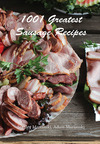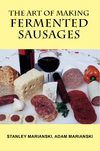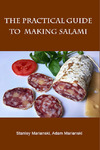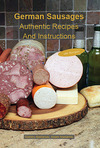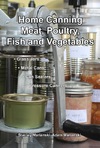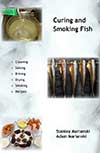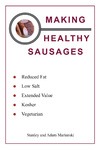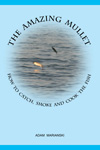Meats and Sausages
Lomo Picado
Lomo picado is a formed loin made of loin trimmings which are big enough to form a loin. A similar product to molded ham, the difference is that the ham pieces are held together under pressure in mold and cooked in water, and loin pieces are stuffed tightly in a casing and fermented and dried. This, of course, results in a different texture and flavor.
Loin pieces must be well trimmed off of any fat, silver screen (film) and connective tissue otherwise they will not stick well together. They should be cold and cut with a sharp knife to obtain clean surface. The salt will do the rest, the cells will release proteins which ill dissolve in salt and his solution known as "exudate" will glue individual meat cuts together.
| Meats | Metric | US |
|---|---|---|
| Pork loin pieces | 1 kg | 2.2 lb |
Ingredients per 1000g (1 kg) of meat
| Salt | 25 g | 4 tsp |
| Cure #2 | 3.0 g | 1/2 tsp |
| Dextrose | 2 g | 1/2 tsp |
| Sugar | 3.0 g | 1/2 tsp |
| Pimentón, sweet | 25 g | 4 Tbsp |
| Pimentón, hot | 5.0 g | 1 tsp |
| Oregano, ground | 2.0 g | 1 tsp |
| Thyme, ground | 0.5 g | 1/4 tsp |
| Rosemary | 0.3 g | 1/8 tsp |
| Garlic, diced | 7.0 g | 2 cloves |
Instructions
- Dice loin pieces into 1-3 cm (1/4 - 1") cubes. Trim off the skin and connective tissue from the loin. Mix meat with all ingredients well together. Hold in refrigerator for 48 hours.
- Stuff tightly into 50-80 mm pork bungs, synthetic permeable casings or blind cap (caecum).
- Ferment at 20-22° C (68-72° F), 95→90% humidity, for 48 hours.
- Dry at 15→12° C (59-53° F), 85→75% humidity for 2-3 months, depending on diameter. The loin should lose around 33% of its original weight.
- Store at 10-12° C (°F), <75% humidity.
Notes
Using smaller diameter casings will result in a shorter drying time.



